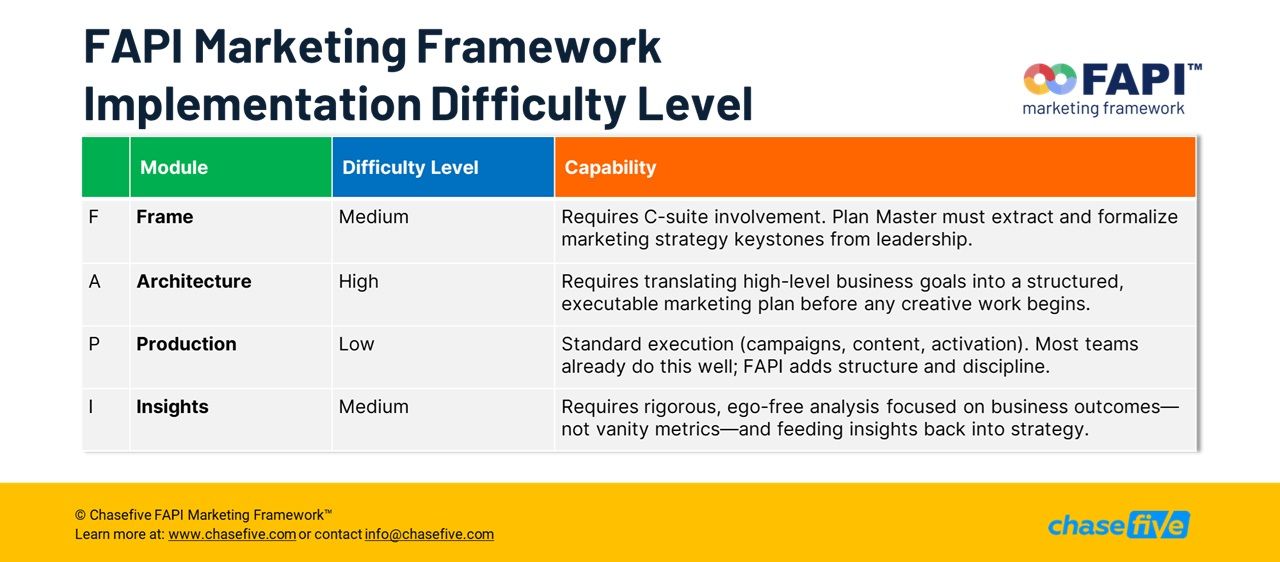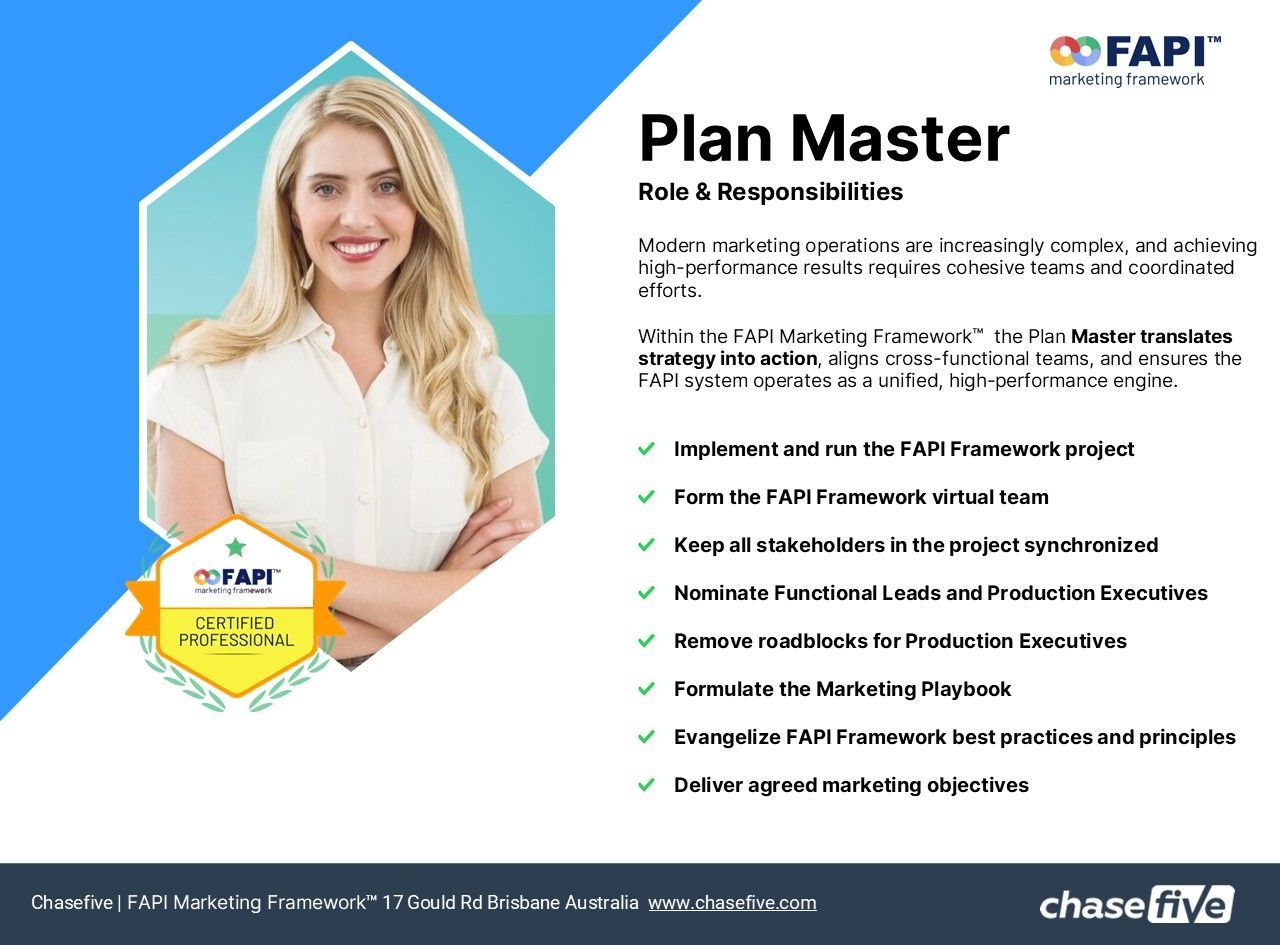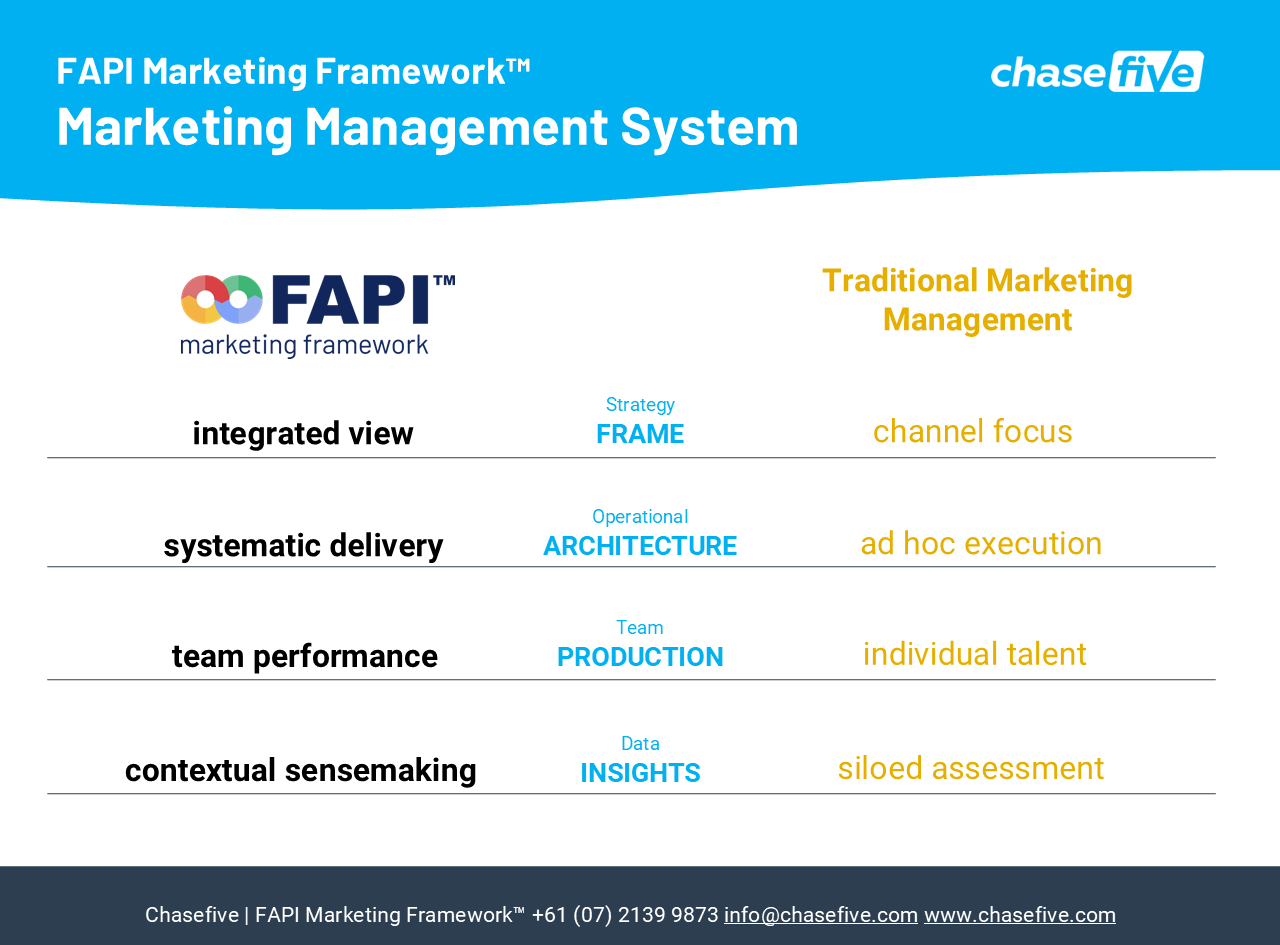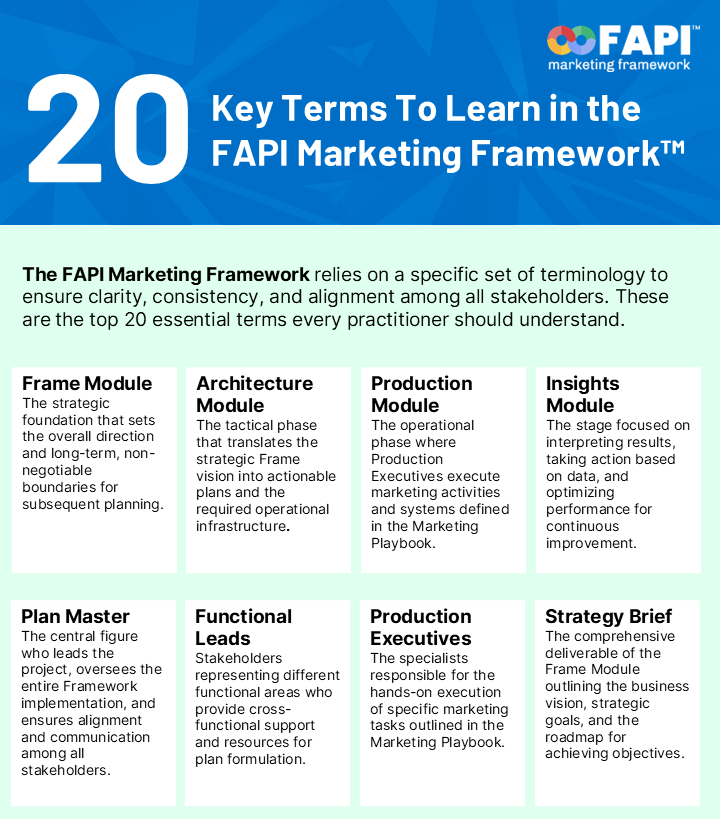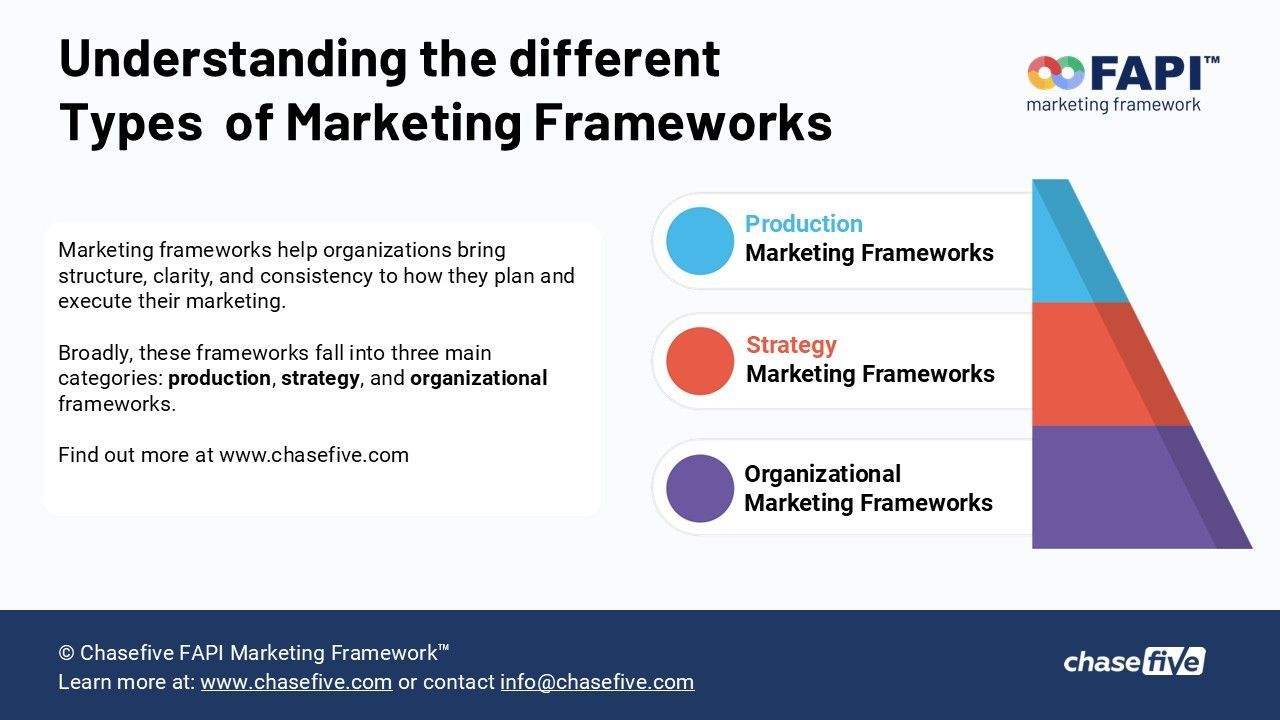How business leadership teams can set the marketing direction. Mission-critical, non-negotiable and long-term
Understanding the strategic marketing Frame Module
Given its broad domain of influence in every organization, it is best to comprehend marketing organizationally not simply as a discipline but as an industry.
The construction industry serves as a fitting analogy for marketing. Just as construction entails diverse roles and specializations, each with unique expertise—from interior designers and civil engineers to conveyancing solicitors and project managers—marketing equally requires a diverse range of expertise, and in both cases (construction and marketing industry) success of any project depends on the collective contributions of all involved.
Like in the construction industry analogy, marketing has its own supply chain, with raw materials such as assets, data etc., these raw materials are transformed into finished products that are the marketing activities and campaigns. Marketing also requires administrative and value-add services like market research, creative development, and operational infrastructure like software, media networks and best practice methods to facilitate execution. Finally, like in the construction industry parallel, marketing is subject to regulatory oversight, which may include advertising standards and consumer protection legislation to ensure compliance.
The analogy between marketing and construction provides a helpful lens to understand the complexity and interdependence of multiple moving parts in marketing.
The question now is how (and who) is accountable to control the end-to-end marketing process and ensure synchronicity and alignment? Who should be responsible for coordinating all of these complex, internal and external moving parts?
Marketing starts with the C-suite
If we accept that marketing impacts all areas of the organization, then it makes sense that the responsibility for setting the marketing direction lies with the senior business leadership team rather than with the marketing department.
That the senior leadership team should lead marketing strategically is probably not a controversial idea. However, as always, the devil is in the detail. So, what's more interesting is the boundary between business leadership's role in marketing and the responsibilities of the marketing team. At what exact point does this transition in the process take place? What are the expectations during this handover stage between business leadership, marketing planning and marketing execution downstream?
The answer based on the FAPI Marketing Framework workflow, is the C-suite should be accountable for establishing the
strategic marketing
Frame (and, of course, providing support throughout the subsequent stages of the marketing management process).
By definition, the strategic Frame focuses on the marketing Components that hold strategic significance. The strategic Frame encompasses all marketing Components that define the organization's marketing DNA, these Components are therefore by definition
non-negotiable, long-term, and mission-critical.
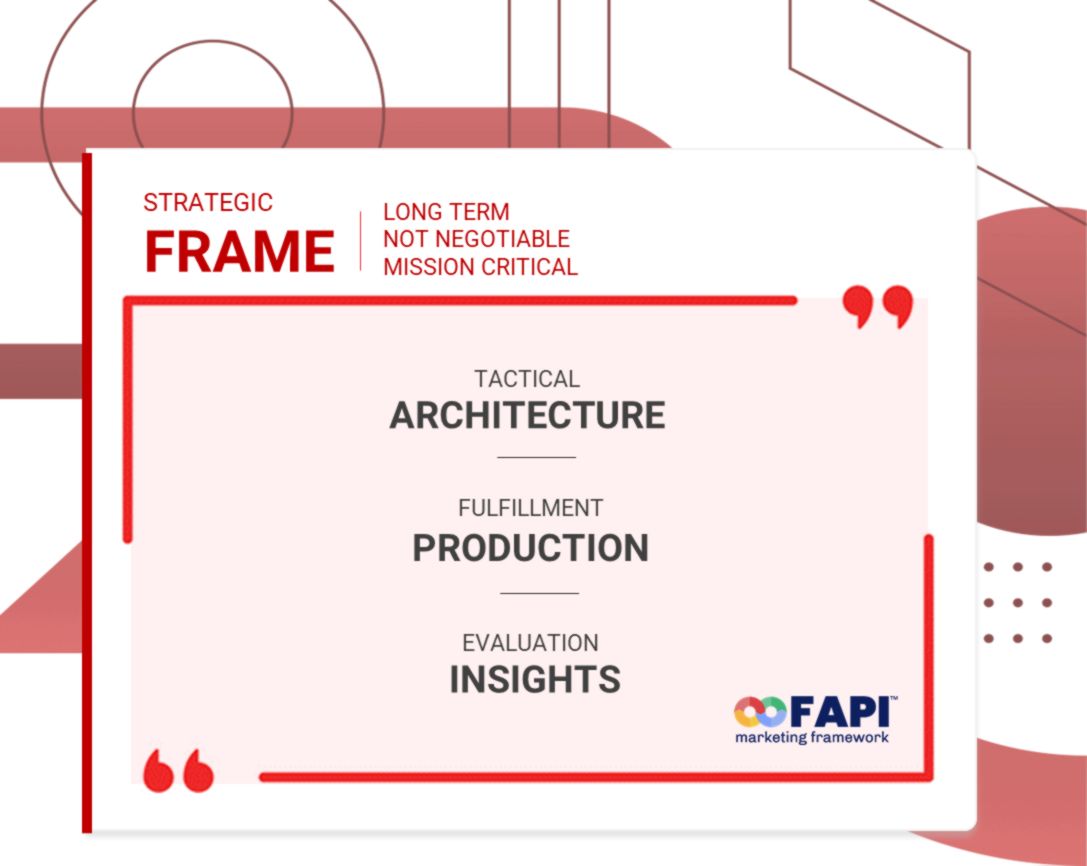
Setting the strategic marketing Frame. Giovannoni, E. (2023). Modern Marketing Architecture: The Official FAPI Marketing Framework™ Guidebook
Setting the strategic Frame
It's easy to think of examples of strategic marketing Components in most businesses, think of a luxury brand for example, and you can picture how the marketing Components that are predetermined and not negotiable, these would include the target audience segmentation, pricing strategy, the competitive positioning etc. In this respect, the strategic Frame provides a predetermined pathway for the marketing team to execute.
Each business sector has unique marketing components that can be strategically or tactically designated, with varying levels of flexibility. Senior leadership teams should carefully consider which marketing Components to consolidate within the strategic Frame and which to delegate to the tactical Architecture stage.
For example, a strategic Frame Component that gives rise to ambiguity or a grey area is "marketing campaigns". Should these be crystallized in the Frame stage or delegated to tactical Architecture plans? When in doubt, always follow the golden rule of strategic Frame: mission-critical, non-negotiable, long-term. If your primary marketing campaigns meet these three criteria, they are strategic and should be included in the Frame module.
If we think of an e-commerce business, for example, Black Friday is a strategic campaign milestone on which a large percentage of top-line revenue may depend. To this effect, the planning and execution of this Component and certain key parameters would be non-negotiable and mission-critical, with long-term repercussions for new customer acquisition.
A clear and comprehensive Frame, sets the direction for marketing alignment
The strategic marketing Frame must be clear and detailed, leaving no room for ambiguity or discrepancies. Overlooking this critical requirement can lead to potential gaps and contradictions that can introduce inconsistencies during the Production stage. These discrepancies can significantly impact performance and hinder the achievement of optimal ROI.
Proceeding with marketing implementation without first completing the strategic Frame increases the risk of misalignment and disjointed execution, leading to poor results or, even worse, detrimental effects.
The business leadership team has a responsibility to crystallize the strategic Frame, and this cannot be delegated to the marketing Production stage or even the tactical Architecture planning stage.
Don't hesitate to get in touch with your comments and thoughts on marketing strategy and planning and request free access to the
FAPI Marketing Framework™ Planner.

